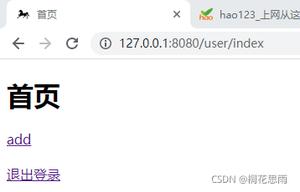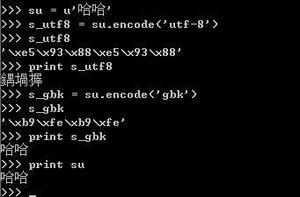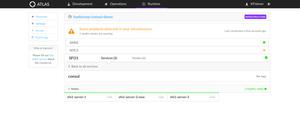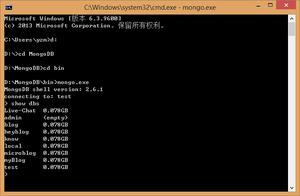Python Matplotlib库入门指南
Matplotlib简介
Matplotlib是一个Python工具箱,用于科学计算的数据可视化。借助它,Python可以绘制如Matlab和Octave多种多样的数据图形。最初是模仿了Matlab图形命令, 但是与Matlab是相互独立的.
通过Matplotlib中简单的接口可以快速的绘制2D图表
初试Matplotlib
Matplotlib中的pyplot子库提供了和matlab类似的绘图API.
import matplotlib.pyplot as plt #导入pyplot子库
plt.figure(figsize=(8, 4)) #创建一个绘图对象, 并设置对象的宽度和高度, 如果不创建直接调用plot, Matplotlib会直接创建一个绘图对象
plt.plot([1, 2, 3, 4]) #此处设置y的坐标为[1, 2, 3, 4], 则x的坐标默认为[0, 1, 2, 3]在绘图对象中进行绘图, 可以设置label, color和linewidth关键字参数
plt.ylabel('some numbers') #给y轴添加标签, 给x轴加标签用xlable
plt.title("hello"); #给2D图加标题
plt.show() #显示2D图
基础绘图
绘制折线图
与所选点的坐标有关
# -*- coding: utf-8 -*-
#!/usr/bin/env python
import numpy as np
import matplotlib.pyplot as plt
x = [0, 1, 2, 4, 5, 6]
y = [1, 2, 3, 2, 4, 1]
plt.plot(x, y, '-*r') # 虚线, 星点, 红色
plt.xlabel("x-axis")
plt.ylabel("y-axis")
plt.show()
更改线的样式查看plot函数参数设置
多线图
只需要在plot函数中传入多对x-y坐标对就能画出多条线
# -*- coding: utf-8 -*-
#!/usr/bin/env python
import numpy as np
import matplotlib.pyplot as plt
x = [0, 1, 2, 4, 5, 6]
y = [1, 2, 3, 2, 4, 1]
z = [1, 2, 3, 4, 5, 6]
plt.plot(x, y, '--*r', x, z, '-.+g')
plt.xlabel("x-axis")
plt.ylabel("y-axis")
plt.title("hello world")
plt.show()
柱状图
# -*- coding: utf-8 -*-
#!/usr/bin/env python
import numpy as np
import matplotlib.pyplot as plt
x = [0, 1, 2, 4, 5, 6]
y = [1, 2, 3, 2, 4, 1]
z = [1, 2, 3, 4, 5, 6]
plt.bar(x, y)
plt.xlabel("x-axis")
plt.ylabel("y-axis")
plt.show()
子图
subplot()函数指明numrows行数, numcols列数, fignum图个数. 图的个数不能超过行数和列数之积
# -*- coding: utf-8 -*-
#!/usr/bin/env python
import numpy as np
import matplotlib.pyplot as plt
x = [0, 1, 2, 4, 5, 6]
y = [1, 2, 3, 2, 4, 1]
z = [1, 2, 3, 4, 5, 6]
plt.figure(1)
plt.subplot(211)
plt.plot(x, y, '-+b')
plt.subplot(212)
plt.plot(x, z, '-.*r')
plt.show()
文本添加
当需要在图片上调价文本时需要使用text()函数, 还有xlabel(), ylabel(), title()函数
text()函数返回matplotlib.text.Text, 函数详细解释
# -*- coding: utf-8 -*-
#!/usr/bin/env python
import numpy as np
import matplotlib.pyplot as plt
x = [0, 1, 2, 4, 5, 6]
y = [1, 2, 3, 2, 4, 1]
plt.plot(x, y, '-.*r')
plt.text(1, 2, "I'm a text") //前两个参数表示文本坐标, 第三个参数为要添加的文本
plt.show()
图例简介
legend()函数实现了图例功能, 他有两个参数, 第一个为样式对象, 第二个为描述字符
# -*- coding: utf-8 -*-
#!/usr/bin/env python
import numpy as np
import matplotlib.pyplot as plt
line_up, = plt.plot([1,2,3], label='Line 2')
line_down, = plt.plot([3,2,1], label='Line 1')
plt.legend(handles=[line_up, line_down])
plt.show()
或者调用set_label()添加图例
# -*- coding: utf-8 -*-
#!/usr/bin/env python
import numpy as np
import matplotlib.pyplot as plt
line, = plt.plot([1, 2, 3])
line.set_label("Label via method")
plt.legend()
plt.show()
同时对多条先添加图例
# -*- coding: utf-8 -*-
#!/usr/bin/env python
import numpy as np
import matplotlib.pyplot as plt
line1, = plt.plot([1, 2, 3])
line2, = plt.plot([3, 2, 1], '--b')
plt.legend((line1, line2), ('line1', 'line2'))
plt.show()
更多图例设置可以参考官方图例教程
以上是 Python Matplotlib库入门指南 的全部内容, 来源链接: utcz.com/z/354175.html






